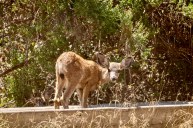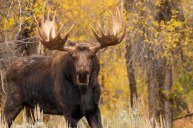California's Catalina Island decided against a controversial plan to shoot mule deer by helicopter. The decision followed months of review and a unanimous vote by the Los Angeles County Fish & Wildlife Commission on Wednesday opposing the plan.
In a statement, the Catalina Island Conservancy explained that experts say "aerial hunting is the most humane method for removing mule deer." The group said the non-native species has caused an ecological imbalance. However, in response to the decision and public concern, the group said it would revise the plan.
Janice Hahn, LA County's supervisor who represents the island, explained that people in the county and living on the island raised concern. "I heard from residents who were terrified at the thought of bullets raining down from helicopters over their beloved island and others who couldn't stand the thought of the deer carcasses that would be left in their wake," she said in a statement.
Although the county wildlife commission officially rejected the plan this week, Hahn and the board of supervisors approved a motion to oppose it in April. The effort followed two petitions with nearly 90,000 signatures expressing disapproval over the proposed methodology.
Why there are mule deer problem on Catalina Island
Catalina Island is located about 22 nautical miles west of Long Beach. It's part plush resort and part outdoor adventure land. The island has a diverse ecosystems — including mountains, grasslands, beaches, and more — as well as miles of trails and a variety of wildlife.
Today, the island's wildlife consists of native and non-native mammals. The non-native animals, such as bison and mule deer, were introduced decades ago for hunting and other purposes. However, with no natural predators, the island's mule deer populations have reached nearly 1,770. With such high numbers, experts describe mule deer as Catalina's biggest threat to native and endemic plant species.
For those reasons, the conservancy proposed eradicating mule deer via helicopter. But since aerial hunting is out of the picture, the group said it will need time to revise the plan. "In the meantime," the group added, "we will proceed with a ground hunting season."




